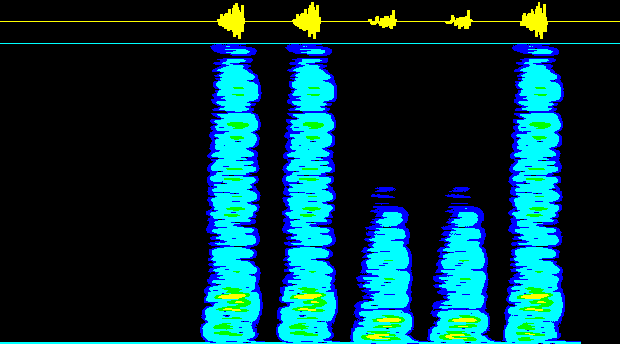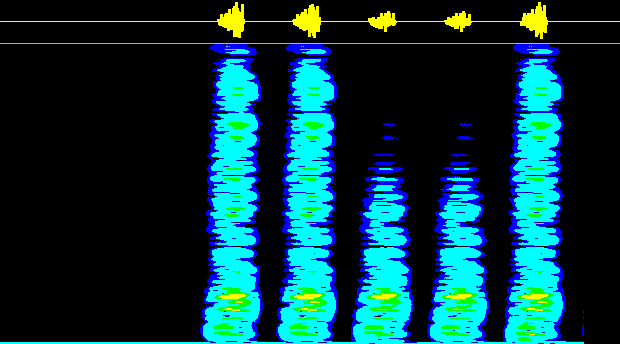There are a number of "famous" auditory illusions (for example, check out those created by Diana Deutsch and those found in Auditory Perception: Demonstrations and Experiments). In this page you can find a "home-made" illusion (based on Bregman's ASA).
The sound samples below are sequences consisting of two different types of sounds. The second sound has been derived from the first one by manipulating some of its physical dimensions. The sequences are always the same: a basic pattern AABBA of the two types of sound is recycled over time (i.e. AABBAAABBAAABBAAABBAAABBA...). Sound A (the first type of sound) is always the same, too.
In the first case, several dimensions (brightness of timbre, loudness,
frequency separation) have been manipulated. Listen to the resulting
sequence ![]() . All
these cues suggest to the auditory system that indeed there is a basic
pattern AAABB. In fact, if you focus your attention to sound A, then you'll perceive a "AAA--" pattern, whereas the B sound is perceived as a "---BB" stream.
Here is the spectrogram of the basic pattern you have just heard:
. All
these cues suggest to the auditory system that indeed there is a basic
pattern AAABB. In fact, if you focus your attention to sound A, then you'll perceive a "AAA--" pattern, whereas the B sound is perceived as a "---BB" stream.
Here is the spectrogram of the basic pattern you have just heard:

Now, here is a second version of the sequence. Sound B has been
derived from sound A by varying only the brightness of A's
timbre (using a low-pass filter). Listen to the resulting sequence ![]() . In
this case, the percept of sound A remains the same ("AAA--").
However, try to focus on sound B. You will perceive a "BBBBB"
continuous pattern. Why does this happen? The following spectrogram
helps to visuallise the explanation.
. In
this case, the percept of sound A remains the same ("AAA--").
However, try to focus on sound B. You will perceive a "BBBBB"
continuous pattern. Why does this happen? The following spectrogram
helps to visuallise the explanation.

The similarity between the spectrum of sound B, and the lower part of the spectrum of sound A is apparent. The result is that sound B captures the relevant spectral part of sound A, giving rise to the illusion that it continues concurrently with A. The audible result is the "BBBBB" pattern.
In the first sequence, more cues were offered to the auditory system (for example, frequency seperation and loudness) which contributed to the correct decomposition of the auditory scene into its constituent sounds. Observe that in the first spectrogram the spectra of the two sounds are different.
This illusion, demonstrates the usefulness of redundant cues in the design of fast-rate presentations.
![]() Back to Evangelos's Research Page
Back to Evangelos's Research Page